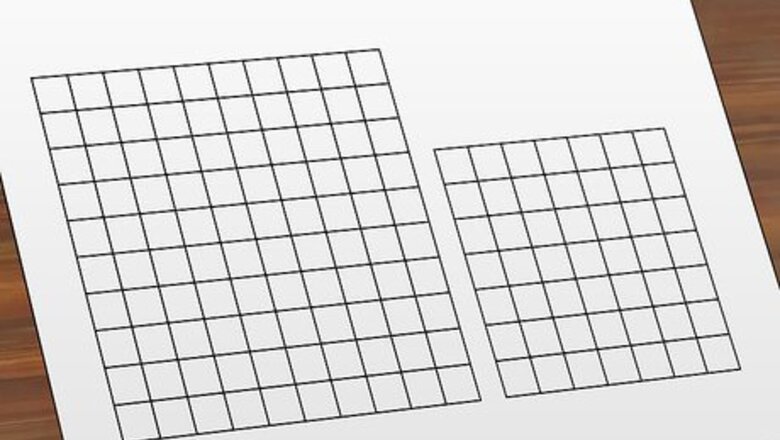
views
Grid Design
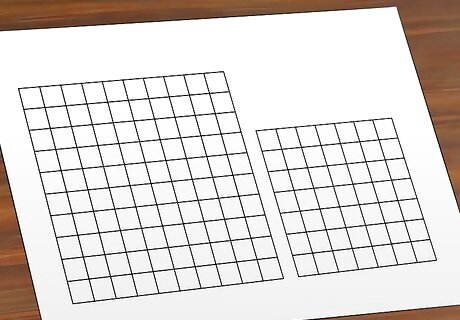
Decide on a grid size. If you’re trying to make a more official, standardized crossword puzzle, there are specific dimensions you have to adhere to. If you’re making a more casual puzzle, though, you can pick whatever size you want. If you're using an online crossword puzzle maker or puzzle-making software, you may be restricted to a certain range of available sizes. If you're making your puzzle by hand, it’s totally up to you.
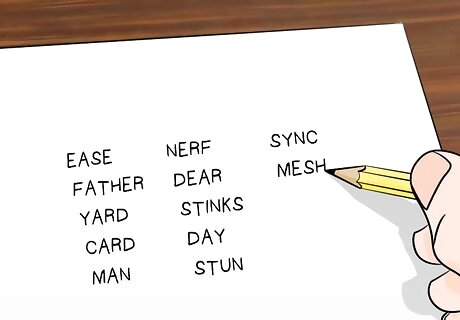
Make a list of words for your crossword puzzle. Usually you'll select words according to a theme of your choosing. That theme, or a clue to it, can then become the title of the puzzle. Examples of common themes include foreign places or languages, words from a certain time period, famous people, and sports.
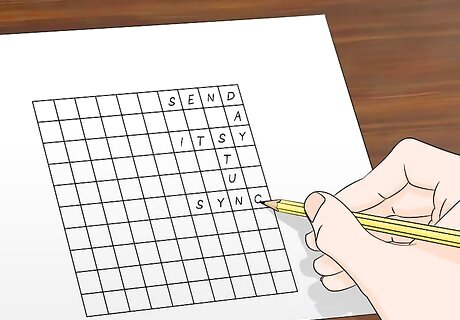
Lay the words out in a grid format. This part of the process can feel as challenging as actually solving a crossword puzzle. Once you've laid the words out, black out any unused squares. In a US style crossword, there should be no “hanging words,” or words that do not connect to other words. Every letter should correspond to both an Across word and a Down word, and be totally interconnected. In a UK style crossword, hanging words are permitted. If the answer to a clue is a phrase rather than a single word, there should be no spaces between the words. You don’t need to worry about capitalizing proper nouns in your answers, as crosswords are usually filled out in all caps. The answers should not include punctuation either. Many crossword puzzle creators automatically lay the words out for you. All you do is specify puzzle size and input the list of words and clues.
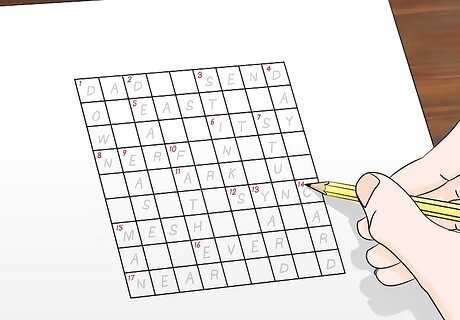
Number the starting square for each word. Begin in the upper-left corner of the puzzle, and divide the words by whether they run vertically or horizontally, so that you have a “1 Down,” and a “1 Across,” etc. This can also be pretty mind-bending, and many people prefer to use software instead of doing it all manually. If you're using a crossword puzzle creator, it will handle the numbering for you automatically.
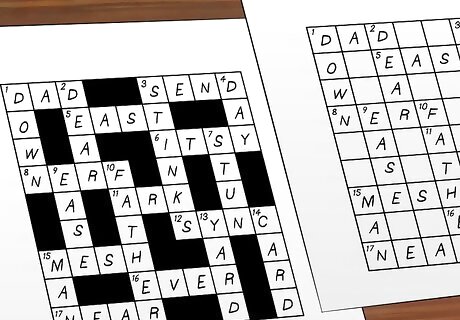
Create a copy of the crossword puzzle. This time the starting square for each word should be numbered, but the squares themselves should be otherwise blank. If you’re creating your puzzle by hand this will be a bit more labor intensive, but if you’re using a crossword puzzle creator it should be done for you. Set aside the filled-in puzzle for use as an answer key. You can make as many copies of the blank one as you need.
Clues
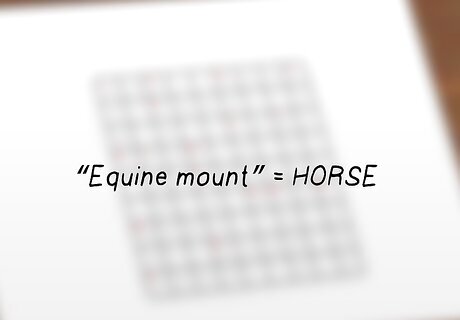
Begin with some straightforward clues. These are referred to as “quick” or “straight” clues, and are generally the easiest to write and to solve. An example might be “Equine mount” = HORSE. If you are making a crossword as an educational tool, or just don’t want to make things too complicated, you can use quick clues exclusively, but if you want to make a more challenging puzzle, you will probably want to avoid them, or use them sparingly.
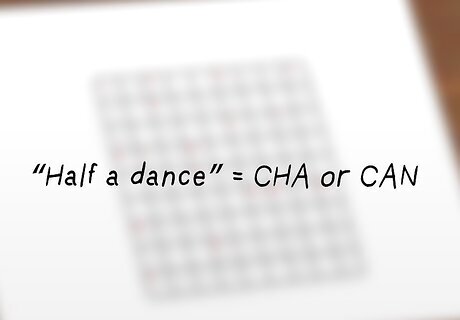
Add another level of challenge with indirect clues. These generally involve some sort of metaphor, or rely on lateral thinking. An example might be “Half a dance” = CHA or CAN (taken from Chacha or Cancan). Crossword creators often indicate this type of clue by beginning with “maybe” or “perhaps,” or by ending the clue with a question mark.
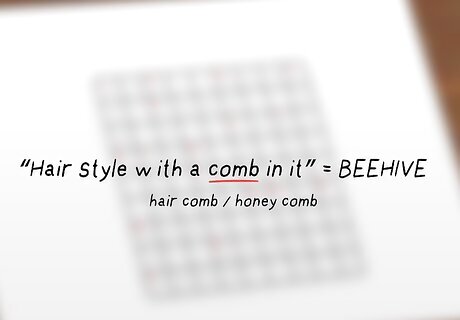
Use cryptic clues. This type of crossword clue is far more popular in the UK than in the US. You will often find cryptic clues in puzzles specifically designated, “cryptic crosswords,” but if they are found in more general puzzles they will often be indicated by a question mark at the end. They rely on various kinds of word play, and usually involve multiple levels of puzzling out. There is a huge number of sub-types within the cryptic clue category. Purely cryptic clues are, essentially, puns. Thus “Hair style with a comb in it” = BEEHIVE, as “comb” can refer to a hair comb or a honeycomb. Reversals require solving a cryptic clue and then reversing the solution. For example, “Go no further putting the crockery up” = STOP. This is solved by translating “crockery” to “pots,” and then inverting “pots” to get “stop.” Note that the solution is also hinted at by the phrase, “go no further.” Palindromes are often indicated by phrases like “either way” or “up and down.” They involve finding an anagram that works as a solution to a cryptic clue. An example would be “Advance in either direction” = PUT UP, because “to put up” can be another way of saying “to advance,” and is also a palindrome (a word that is spelled the same forwards and backwards.)
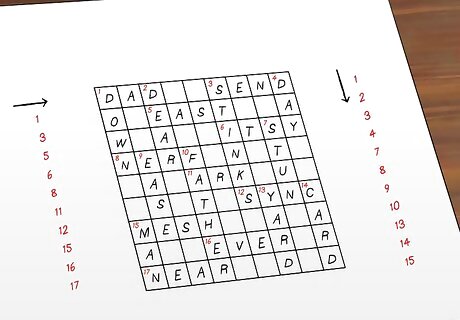
Organize the clues in list form. Number them according to their placement in the puzzle. List all the Across clues together in ascending numerical order, and list all the Down clues together in ascending numerical order.
Rules & Guidelines
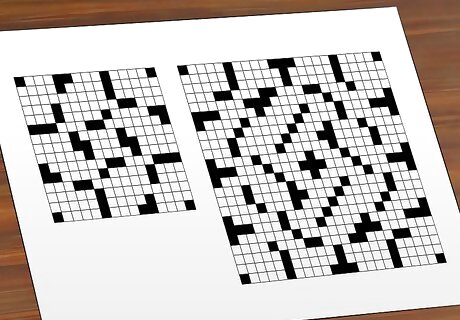
Use one of the standard sizes. Simon & Schuster are the original crossword puzzle publishers, and they introduced the official standards that professional crossword puzzle creators use. One of these standards is that puzzles must be one of five grid sizes: 15×15, 17×17, 19×19, 21×21 or 23×23. The larger the grid, of course, the more difficult the puzzle.
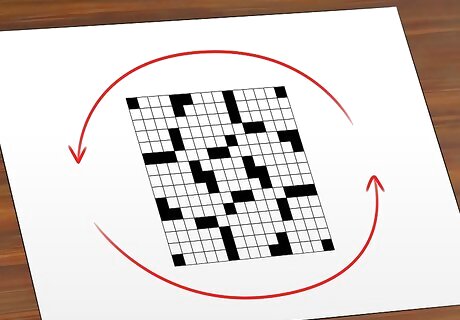
Make sure the diagram has 180-degree rotational symmetry. In this context, “diagram” refers to the arrangement of blacked out squares on your grid. These should be arranged so that if you flipped the graph, the blacked out squares would be in the same places.
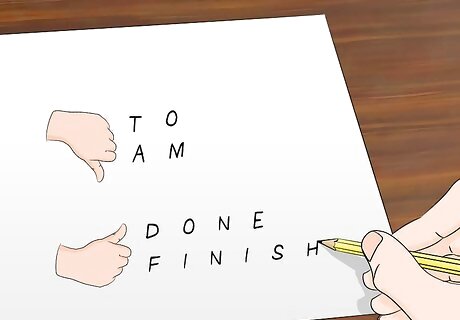
Avoid small words. Two-letter words are never allowed, and three-letter words should be used sparingly. If you’re stuck for thinking of big words, remember that it is also acceptable to use phrases.
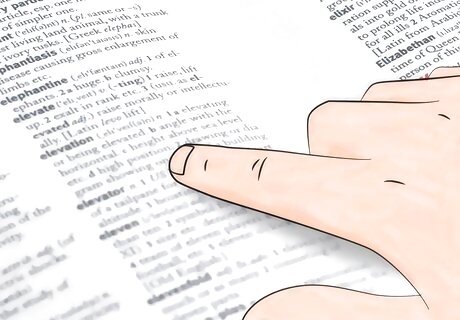
Use referenced words. With some exceptions, the words in your puzzle should be words one can find in a dictionary, atlas, work of literature, textbook, almanac, etc. Certain puzzle themes may prompt you to stray a bit from this rule, but don’t overdo it.
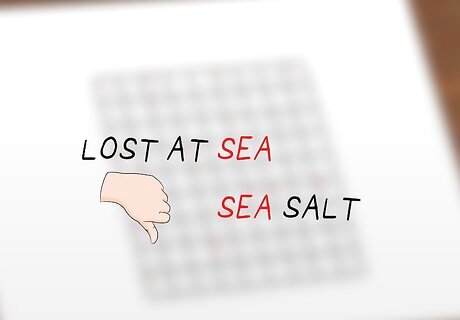
Use each word only once. If one of the phrases in your puzzle is “lost at sea,” you shouldn’t also use “sea salt.” Again, certain themes may give you some degree of flexibility, but you should tread carefully.
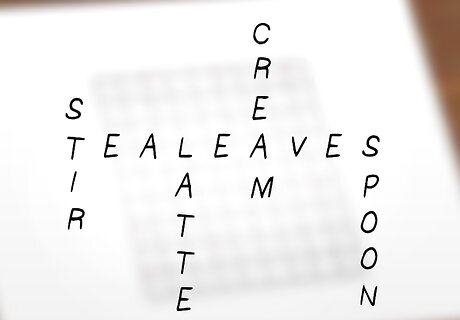
Make the long words count. One hallmark of a well made puzzle is that the longest words are the ones most closely tied into the theme. Not all crossword puzzles have a theme, but most of the best ones do.
















Comments
0 comment